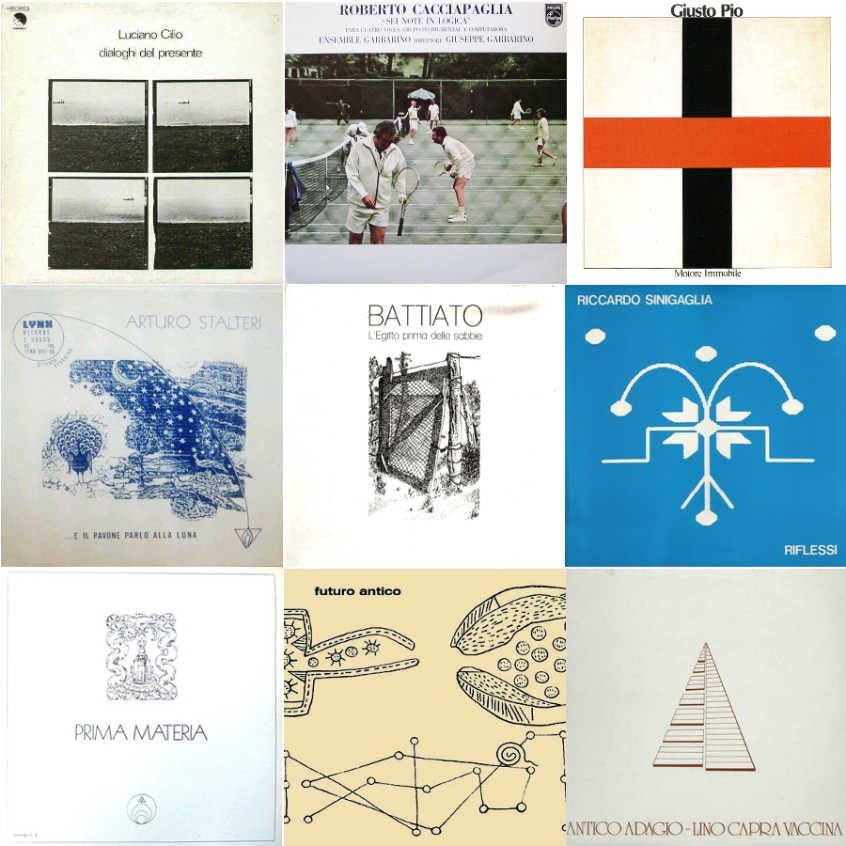
Since the end of the Renaissance, Italy’s creative culture has labored under the weight of its monumental historical importance – often finding its efforts ignored by an outside world which favors its past. Despite the neglect that it’s suffered, over the centuries the country has produced countless contributions to the evolving iterations of the international cultural vanguard, each constructed with nuanced specificity, and unlike anything made beyond the country’s borders. Post-war Italian avant-garde music is one of the most treasured areas of my record collection. It’s also one of the least recognized. Its gestures and responses have few equivalents.
Because this period of Italian music offers albums vast in numbers and varied in content, I’ve decided to focus on a single strand – Minimalism. The county’s contribution to the movement is almost impossible to define, with each artist and album standing in striking singularity. Though it clearly owes a debt to its American cousin, it bears little resemblance to it. Most of these albums were produced well after the initial efforts of counterparts like Steve Reich, Terry Riley, Philip Glass, and La Monte Young, and are usually more closely connected with European schools of avant-garde thought and share many common concerns with the second wave of American Minimalism – particularly figures like Arnold Dreyblatt, John Hassell, Julius Eastman, Arthur Russell, and Ellen Fullman.
Italian Minimalism is distinct for a number of reasons. Within the American movement, most figures came from a Classical Music background and were weened on Serialism and John Cage’s theories of Indeterminacy – both of which often produced tonally isolating results and polarized audiences. Part of their effort was breaking down existing barriers between Pop Culture and avant-garde thought. Many of the key figures in the Italian movement, most notably Franco Battiato, represent a (sometimes temporary) inversion of this, having begun their careers aligned with Pop Culture (which during this period was closely connected with counter-cultural efforts) and slowly moved away from it – making more obscure, complex, and challenging recordings as they went. Though equally discreet, these albums tend to be more compositionally challenging than counterparts made in other countries and draw from a broader range of influences. Because of the singularity of each, it is impossible to join them in collective vision. In some cases the challenge is structural, with slow repetitions putting the listener through grinding paces. In others it’s tonal, with complex relationships and textures pushing to the fore. Each of these nine albums are among my favorites of all time. They offer a fascinating bridge between American Minimalism, global traditions of music, and more explicitly avant-garde gestures of European movements like Groupe de Recherche de Musique Concrète and Groupe de Recherches Musicales. I hope they will offer some insight into a wonderful and often neglected period of Italian music and send you scrabbling to the bins.
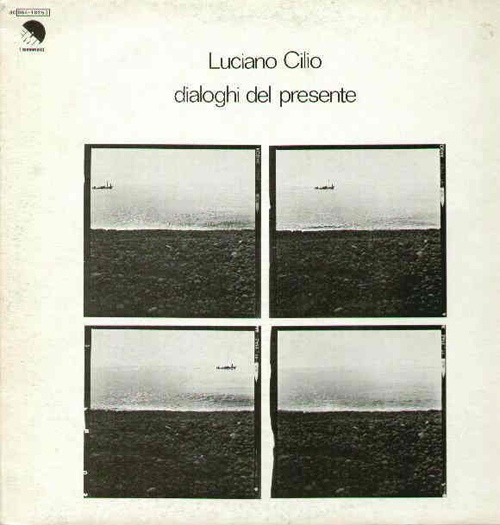
Luciano Cilio – Dialoghi Del Presente (1977)
I fell in love with Luciano Cilio’s Dialoghi Del Presente the first time I heard it, in 2004, when Die Schachtel initially reissued it on CD. Unfortunately the original LP is incredibly rare, and despite constant hunting, was forced to wait nearly a decade before the label released it on vinyl. Dialoghi Del Presente is Cilio’s sole effort. He committed suicide shortly after its completion. It is a work of profound brilliance – as somber as it is uplifting. Unlike most archetypes of Minimalism, which are composed through tonal constraint (utilizing a limited number of notes and instruments), Cilio’s work draws from a broad tonal pallet built of strings, woodwind, percussion, and voice – finding a unique iteration of the idiom through the careful use of time and tempo. Both sides of the LP feel like they were composed in slow motion. It’s a creation of astounding beauty – structures around incredible sparse guitar and vocal drones which shift toward striking passages of strings, percussion and woodwind. The album is filled with pregnant silence and the overwhelming sense that every note falls exactly where it should. It’s close to perfect, slowly revealing itself, and offering mysteries which are clearly intended to be pondered and returned to again and again. I highly recommend having a listen below and picking up Die Schachtel’s issue before it disappears forever. As always they did a wonderful job.
Luciano Cilio – Dialoghi Del Presente (1977)
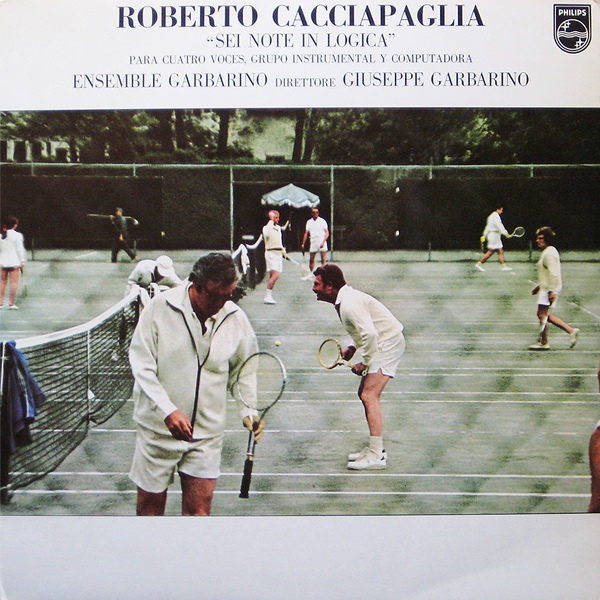
Roberto Cacciapaglia – Sei Note In Logica (1979)
Roberto Cacciapaglia’s Sei Note In Logica is one of many records that came to me via Jim O’rourke. In my youth I’d read his interviews with pen and paper, desperate to uncover his secrets. There are countless musical love affairs that I owe to him, but this one rises to the top. It later appeared in one Alan Licht’s last Minimalist Top Ten updates – coming in at number 31. Its late entry is only forgivable for the remarkable company it keeps there. The record is a masterpiece, and one of the first I’d save from a fire. Cacciapaglia is a fairly prominent figure in the history of Italian avant-garde music. Sei Note In Logica is his second album, and the most compositionally complex and engaging of those I have spent time with. Of the albums on this list, it bears the strongest relationship to the gestures of the first wave of Minimalism – often sounding like a balanced hybrid of Steve Reich, Terry Riley, and Philip Glass. The album is constructed through a fascinating discourse between synthesizers and orchestral instruments with vocal accompaniment. The debt to Reich and Glass is particularly audible throughout, with may passages dominated by constrained tonalities and repetitive rhythms. Somehow Cacciapaglia manages to shake free and build a beautiful object all is his own. I’ve listened to it thousands of times, and it continues to feel fresh and new with every turn. Check it out below. It’s been reissued a couple of times in the last few years, but copies are getting scarce. My efforts to direct you to the usual sources in Europe and the States came up blank. I did notice there are a few remaining at El Nicho’s shop in Mexico City. If you are passing by, pick one up asap.
Roberto Cacciapaglia – Sei Note In Logica (Part One)
Roberto Cacciapaglia – Sei Note In Logica (Part Two)
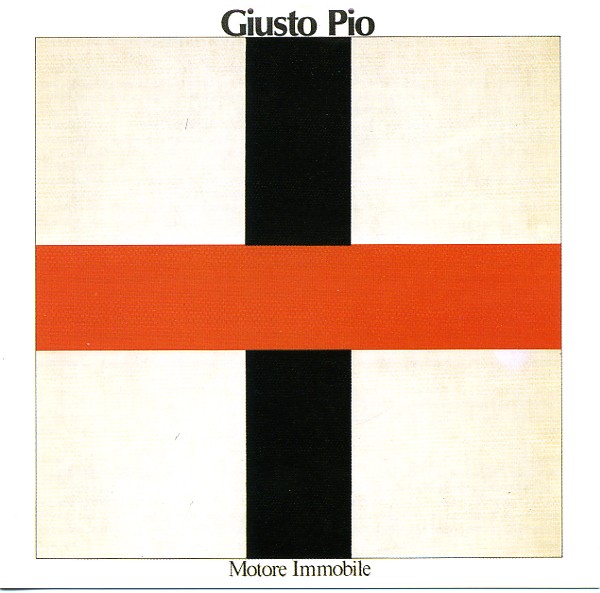
Giusto Pio – Motore Immobile (1979)
Giusto Pio’s Motore Immobile has been one of my holy-grail records for many years. It’s the only album on this list that I don’t own a vinyl copy of. Originally released in 1979 on Cramps, it’s continued absence from my collection is incredibly painful – so much so that I was compelled to email Die Schachtel a couple of years ago, begging them to reissue it. Giusto Pio is a violinist and composer who is most recognized for his collaborations with Franco Battiato. Motore Immobile is a gesture of sublime simplicity, and in my opinion the composer’s masterwork. The first side is a fascinating hybrid of deconstructed melody and drone. Pio stretches a simple passage of notes to nearly seventeen minutes with drones generated by organ, violin, and voice – slowly shifting from one to the next, forcing the listener outside of the comfort zone, and to lose track of relationships and proximity. The second side advances this proposition further through a jarring conflict of time signatures. The body of the work is made up of a similar series of slowly evolving organ drones, into which Pio slowly disperses a rapidly arpeggiated chord of piano notes. The effect of the two in conjunction is astonishing, beautiful, and dislocating. Let’s hope this one gets a vinyl reissue soon – until then there was a CD reissue a few years back, and you can listen to it below.
Giusto Pio – Motore Immobile (1979)
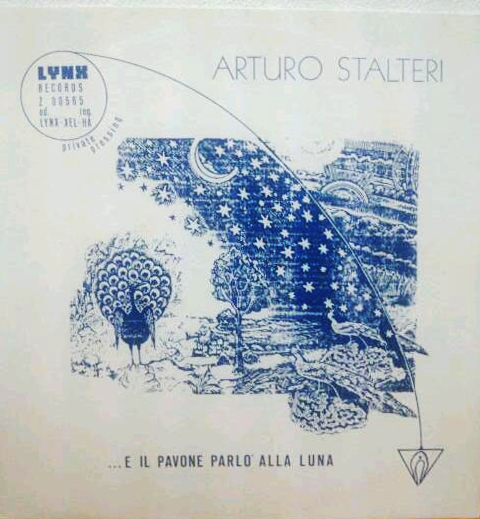
Arturo Stalteri – …E Il Pavone Parlo’ Alla Luna (1987)
I can’t remember how I came across Arturo Stalteri’s …E Il Pavone Parlo’ Alla Luna. It’s definitely one of the more obscure records on this list. Like a number of other figures featured here, Arturo Stalteri is more well-known for his efforts aligned with pop culture (versus the avant-garde), particularly for this album’s predecessor, the bizarre Prog. opus Andrè Sulla Luna. Though …E Il Pavone Parlo’ Alla Luna is more complex and ambitious than most of Stalteri’s other work, it is also not entirely dislocated from it, making it distinct within this company. It’s a strange hybrid, both challenging and incredibly accessible. Each passage feels autonomous and separate from the next. There are elements of New Age, Prog, 20th Century Classical music, the outer reaches of Minimalism, and Indian Classical music. The compositions are largely built around organ and piano, heavily utilizing the methods of repetition found in American Minimalism, but Stalteri’s tonal structures are more jarring and uncomfortable. It’s definitely a weird record, but more than worth the time if you can track it down.
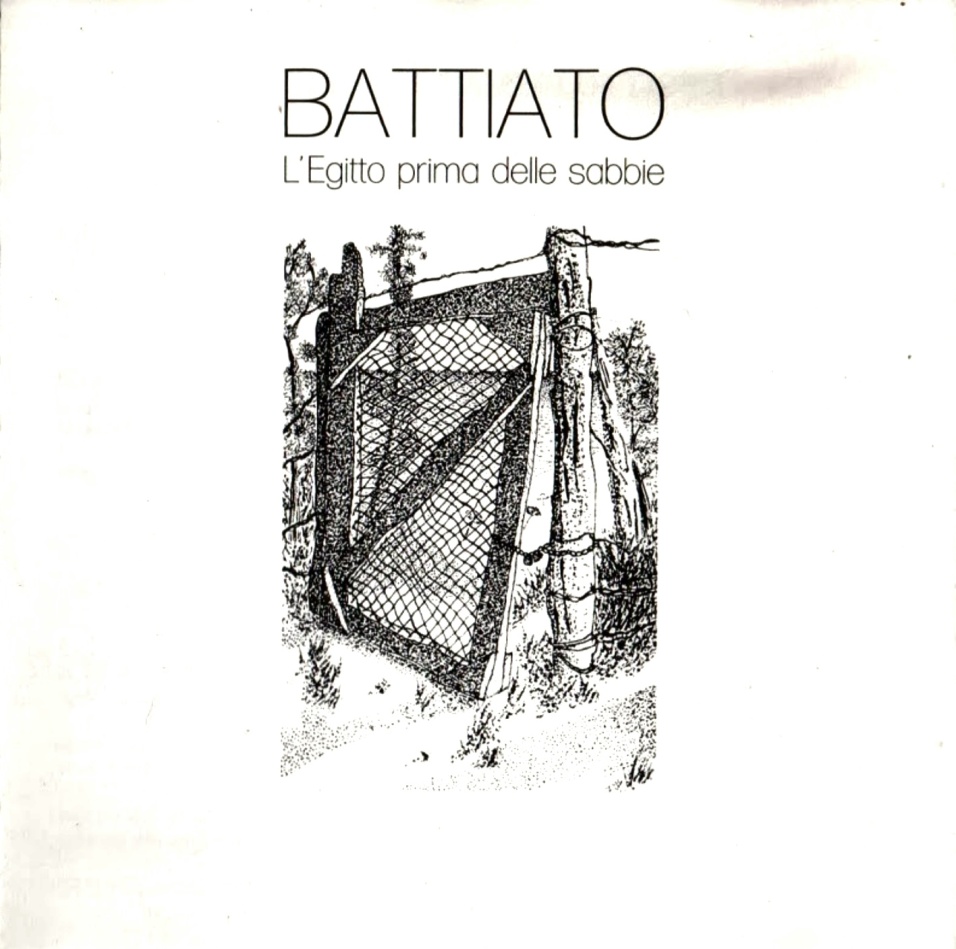
Franco Battiato – L’Egitto Prima Delle Sabbie (1978)
Franco Battiato is one of the most recognized figures within the 1970’s Italian avant-garde. Fascinatingly, he began his career in popular music, occupying a similar place to the one held by Frank Zappa and Captain Beefheart in America. His incredible albums – Fetus, Pollution, and Sulle Corde Di Ariesmusic illustrate that period of his career. They’re as worthy of attention as anything else he made. In 1974 he released Clic, an instrumental and decidedly avant-garde gesture. The album represents a turning point in Battiato’s career. For the remainder of the 70’s his albums became stark, minimal, and thrilling, occupying a close proximity to Classical Music. L’Egitto Prima Delle Sabbie is his last avant-garde gesture before returning to the world of popular music. It’s absolutely stunning. The best way to describe it is as an album of silence, penetrated by piano. The title track is comprised of same arpeggiated chord repeated at varying intervals, with the space between filled by the drifting resonances of the notes. The second side is occupied by the work Sud Afternoon, which is structurally similar, but rather than the harmonic pleasure of L’Egitto Prima Delle Sabbie, we find a slightly dissonant chord banging into the space. The record is incredible, and though it hasn’t been reissued recently, is fairly easy to find and is inexpensive. A high point of Italian Minimalism. Definitely not to be missed.
Franco Battiato – L’Egitto Prima Delle Sabbie (1978)

Riccardo Sinigaglia – Riflessi (1986)
Riccardo Sinigaglia was one of the founding members of the incredible Futuro Antico (who I will discuss shortly). His album Riflessi is one of my favorite obscure treasures of Italian Minimalism. It captures an extended realization of the territory he first explored with Gabin Dabiré and Walter Maioli. Though discreet and subtle, it has a stronger connection to France’s Groupe de Recherches Musicales than it does to most of the efforts of his countrymen (beyond those he directly collaborated with). It’s a weird work, utilizing strange staggered rhythms, field recordings, synthesizers and Non-Western instruments. It almost feels like the music of a lost African tribe dropped into the GRM studio. It’s wonderful, and filled with unexpected surprises. Though not always easy to find, it’s definitely worth hunting for.
Riccardo Sinigaglia – Riflessi (1986)
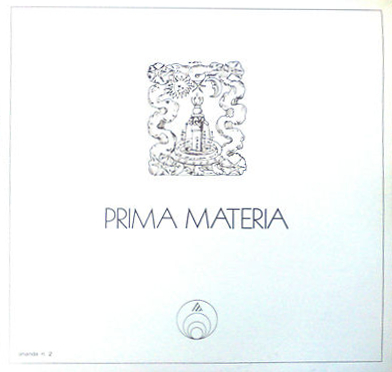
Prima Materia – La Coda Della Tigre (1977)
Prima Materia was a quartet of Italians and Americans – Claudio Ricciardi, Gianni Nebbiosi, Roberto Laneri, and Susanne Hendricks, who were dedicated to extended vocal techniques found in Non-Western traditions of music. La Coda Della Tigre was their sole release, and was originally issued by Ananda – an Italian label run by the composers Alvin Curran, Roberto Laneri and Giacinto Scelsi. The record is a brilliant hybrid. Though it owes a great deal to La Monte Young and The Theatre of Eternal Music, it feels more natural and less heavy handed than their efforts – exhibiting stronger connections to the certain threads of Indian Classical music, as well as many Buddhist throat singing traditions. The album is incredible. Composed of interlacing vocal drones, harmonic relationships, and overtones ring from the speakers. It’s totally immersive. The original is almost unobtainable, but Die Schachtel has reissued it as a beautiful extended box set which is not to be missed. An absolute must for anyone interested in vocal music, ethnic traditions, and Minimalism. It seems Honest Jon’s still has copies of the reissue here if you are in the UK / Europe, as does Superior Viaduct if you are in the US. It seems to be going fast. Get it quick.
Prima Materia – La Coda Della Tigre (1977)
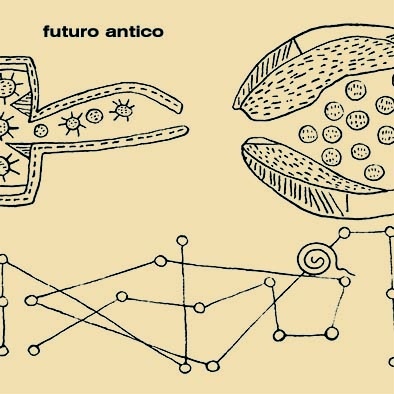
Futuro Antico – Futuro Antico (1980)

Lino Capra Vaccina – Antico Adagio (1978)
Like Walter Maioli, Lino Capra Vaccina was a member of Aktuala throughout the 1970’s. In many ways his first solo release Antico Adagio makes a perfect pair with Futuro Antico’s debut featured above – evolving along its own path from the gestures first explored in its maker’s former group. Vaccina is a percussionist, and Antico Adagio is an album built around rhythmic exploration. Though it’s far more open and loose, hints of American Minimalism bleed through in passages that drift toward the use of metronomic repetition. The album’s pallet largely grows from rhythms produced my marimba and xylophone, interlaced with other percussion, oboe, violin, and vocal drones. It’s a stunning, engrossing piece of work. A perfect blend of the psychedelic and rigors of Minimalist composition. I hunted for the original for many years without luck. Fortunately Die Schachtel lovingly reissued it in 2014. As always, they did an incredible job. There are still copies floating around, but I wouldn’t sit on it too long. Have a listen below and get it before it goes.
Lino Capra Vaccina — Antico Adagio (1978)
Lino Capra Vaccina – Elegia (1978)
Lino Capra Vaccina – Voce In Xy (1978)
-Bradford Bailey
for a discussion of these and many other, can be found: “Solchi sperimentali Italia. 50 anni di italiche musiche altre”, di Antonello Cresti per crac edizioni
http://edizionicrac.blogspot.it/2015/10/antonello-cresti-solchi-sperimentali.html
LikeLike
A very interesting post, by a non Italian friend! Many thanks!
LikeLike
You’re very welcome. So happy you liked it – more pieces on obscure gems of European Minimalism to come down the road.
LikeLiked by 1 person
This is a fantastic work in a simmler vain I do think Giacinto Scelsi deserved more of a mention. Still great stuff! https://www.youtube.com/watch?v=yFPaDZc5aAk
LikeLike
So happy you like it. Agreed. Giacinto Scelsi is fantastic. The only record I have is the with Iannis Xenakis and Philip Glass on CP² which features Anahit (your link). I’ve been looking for the others from that period for a long time.
LikeLike
this is the most beautiful thing a friend has sent me for quite a while. love every album on this list.thanks so much for sharing these perfect introductions!!
LikeLike
That’s so wonderful to hear. Thank you. Stay tuned for more articles on obscure threads of minimalism down the road
LikeLike
Great post. Pio, Cilio and Battiato’s 70s albums are also very, very important for me. I’m always wondering how the italians put so much emotion in their minimalist approach. I also recommend Prati Bangati del Monte Analogo by Raul Lovisoni and Francesco Messina, two peers of Battiato.
LikeLike
Really glad you like it. In a normal case Raul Lovisoni & Francesco Messina’s Prati Bagnati Del Monte Analogo would have been on there for sure. It’s an absolute favorite of mine, but I wrote about it a little while back and didn’t want to be redundant. You can find it here if you missed it -> https://blogthehum.wordpress.com/…/seven-obscure-harp…/
LikeLike
Thank you for this wonderful list; you should also mention one of the greatest minimalist Italian albums ever made, ‘Modi’ by Piero Milesi, a true classic. Listen here:
And of course the solo works of Alvin Curran (The Works, Canti Illuminati etc.) who is from the USA but lived a good deal of his life in Rome….and one way or another you can hear the influence.
LikeLike
Loved it. Thanks for posting it.
LikeLiked by 1 person